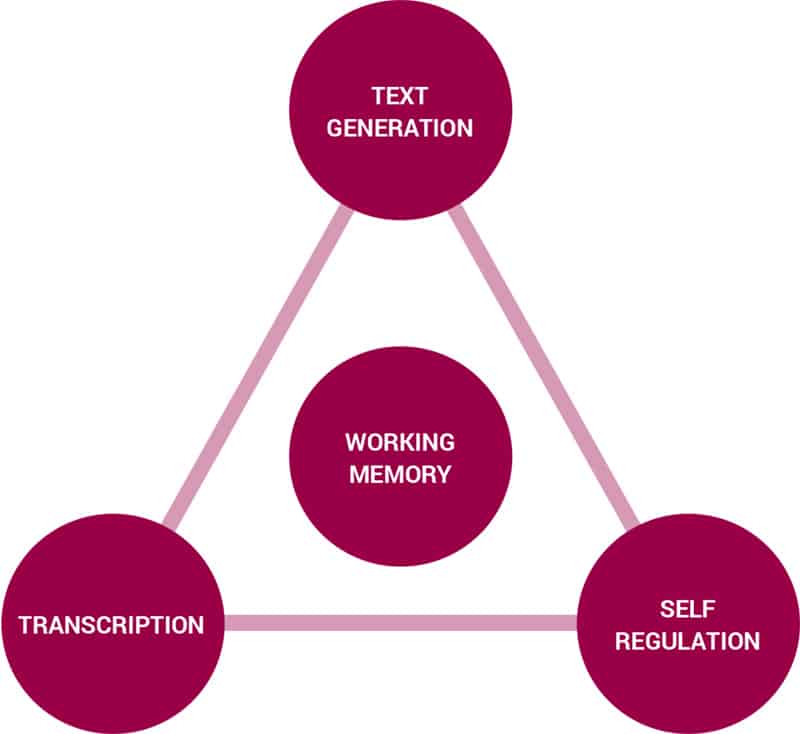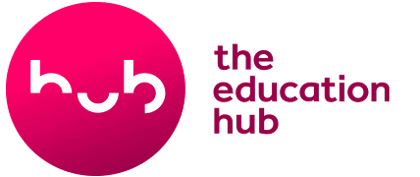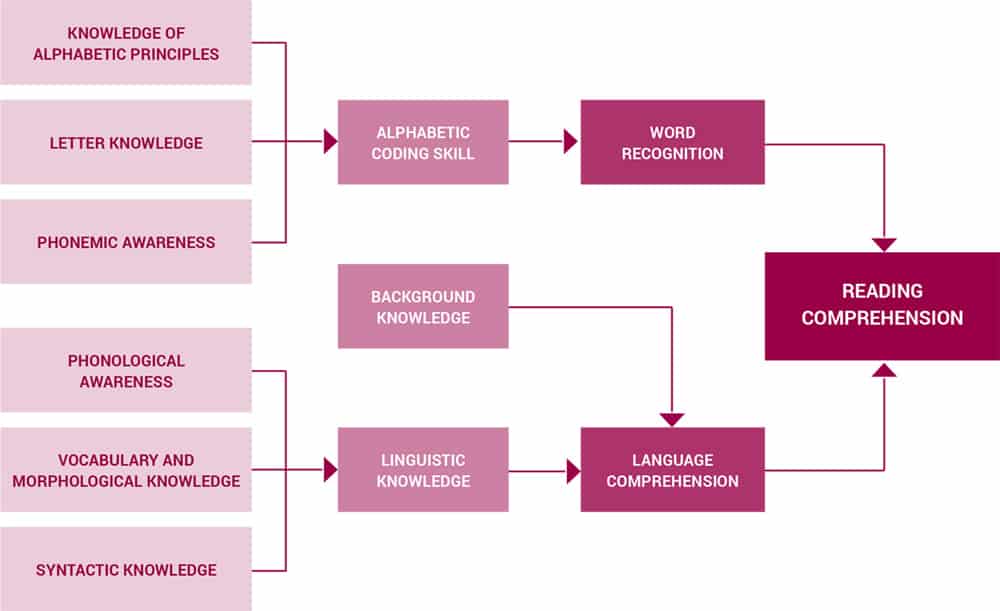Sample Category Title
About this resource
Sample Category Description. ( Lorem ipsum dolor sit amet, consectetur adipisicing elit, sed do eiusmod tempor incididunt ut labore et dolore magna aliqua. )
SECTION 1: Learning to read and write
This section provides a brief overview of the theories of learning to read and write. More detailed information on reading and writing can be found here.
In this section
Understanding reading
The ultimate aim of reading is to comprehend a text. Reading comprehension success requires mastering both oral language and its printed form.
The Cognitive Foundations Framework provides a useful model for understanding the building blocks that need to be developed (and taught) to ensure success in reading.
- Reading comprehension is being able to gain literal and inferred meaning from reading a printed text.
- Language Comprehension is the ability to make meaning from spoken language.
- Background knowledge refers both to what one knows about the topic, that is the content being written about or discussed, as well as aspects of how texts work, including, for example, elements of narrative such as plot, setting, characters, and themes. Inferencing is the ability to use language clues to go beyond what the words say on the surface to consider the deeper meaning of the text.
- Linguistic knowledge incorporates the form, sounds and meaning of language at both the word level and at the sentence level.
- Phonological knowledge involves recognising the speech sounds of a language. Phonology of language is the word itself, as well as the syllables and the phonemes, which are the smallest units of sound that make up a word.
- Vocabulary or Semantic knowledge is the meaning of individual words and words within sentences and morphological knowledge is the ability to recognise morphemes (the smallest meaningful lexical item in a language e.g. trans or ism) in words.
- Syntactic knowledge is the way words work together in a sentence and is governed by the specific rules of a language. For example, English is based on subject-verb construction.
- Word recognition (or decoding) is the understanding that in English both systematic and unsystematic (idiosyncratic/exceptional) relationships exist between written and spoken forms of words.
- Alphabetic coding skill is the ability to use the alphabetic principle to read and spell words.
- The alphabetic principle refers to knowing that a systematic relationship exists between the phonemes (smallest unit of sound, e.g. c-a-t in cat or ch-a-t in chat) of spoken words and the graphemes of print (a written symbol that represents a phoneme).
- Letter knowledge isthe ability to recognise and manipulate the units (letters) of the writing system.
- Phonemic awareness is the conscious knowledge that words are built from a discrete set of abstract units, or phonemes, coupled with the conscious ability to manipulate these units.
Understanding writing
Writing involves the coordination of many elements, including: basic skills such as letter formation, spelling, and punctuation use; knowledge of one’s purpose for writing; knowledge of the conventions of genre, sentence structure, and text organisation; as well as the coordination of the writing processes, which include planning, re-reading, evaluating, and revising.
The Simple View of Writing (sometimes called the ‘Not So Simple’ View of Writing to highlight how much more complex it is than reading) demonstrates that writing composition depends on three areas of skills, which in turn are all reliant on working memory.

- Transcription skills are those skills required to get words down on a page - spelling and handwriting.
- Text generation, which sometimesis referred to as translation, is the expression of thoughts in writing, and requires vocabulary knowledge and sentence-generation skills, as well as understandings of such concepts as genre, voice, and purpose.
- Executive function or self-regulation refers to the ability to monitor and direct the writing or composition process. Skilled writing involves the coordination of the writing task, goals, and ideas with the processes of planning, re-reading, evaluating, and revising.
- Working memory is where information – both new and information retrieved from long term memory for use – is processed. It is defined by its limited capacity, both respect to how much information can be processed at any one time and how long information is stored. In the simple view of writing, working memory also encompasses the knowledge one brings to writing.
Videos to watch
Please note, when the video plays, you can use the controls at the bottom of the player to expand the video to full screen.

The components that make up early writing instruction
Dr Helen Walls explains the Simple View of Writing and what it means for early writing instruction in primary schools.
The reading-writing link
Dr Helen Walls discusses the connection between reading and writing and in particular the importance of phonemic awareness and handwriting.
Examples of undertaking a school-wide literacy improvement journey
Hokowhitu School
Lin Dixon, Principal, and Helen Griffin, Senior Leadership Team Member, discuss how and why they changed their approach and the impact that it has had on their students, teachers, and parents.
Nayland School
Literacy Leader Maree McMahon discusses what spurred Nayland School to relook at literacy teaching, the changes they have made, how they have approached these changes, and the impact they are having.
Tawhero School
Principal Karleen Marshall and teacher Stephanie Robinson discuss how employing a systematic approach to the teaching of literacy has led to substantial improvements in reading and writing and has also had significant impacts on teachers.
SECTION 2: Assessment and monitoring
Assessment allows us to understand more about the progress of each individual student, which students may need additional support and in which areas, and the effectiveness of different teaching approaches and interventions.
In this section
Assessment approaches
As assessment serves different purposes, a range of approaches to assessment is needed in early literacy. The starting point is understanding what you want to measure and why. Below is a table showing the knowledge and skills you will want to assess during a student’s first year at school and tools that can be used to measure these in more formal ways. Small group lessons provide a useful opportunity to informally monitor and assess students’ progress across the range of skills and knowledge that they are developing and to identify any gaps that they may have.
| Knowledge or skill to check | Tools to use |
| Phonological awareness | a phonological screening tool (see for example the GKR phonemic awareness test available on Te Kete Ipurangi) |
| Alphabet knowledge | Letter name and sound (see for example the alphabet test on Te Kete Ipurangi) Speed of naming (See for example DIBELS, which are a series of timed tests that are standardised and normed for grade level) |
| Decoding skill | Reading words according to phase (c-v-c -> cc-v-c -> c-vv-c, and so on) See for example the Adapted Bryant test on Te Kete Ipurangi |
| Encoding skill | Spelling check according to phase (see scope and sequence) |
| Word reading | Word list of high frequency words Burt (from 6 years old) |
| Text reading | Reading an unseen text appropriate to phase (see Scope and sequence) Burt (from 6 years old) |
| Text writing | Analysing a piece of children’s writing using criteria |
Videos to watch
Please note, when the video plays, you can use the controls at the bottom of the player to expand the video to full screen.

Assessment
Tracy Orr, a teacher at Hokowhitu School, discusses the range of formal and informal assessments they use during their students’ first two terms at school.
Reporting to parents
Teacher Kate Smith explains Nayland Primary's approach to assessment during the first year at school and how they engage with parents and whānau to update them and let them know how to support students at home.
Assessment of writing
Dr Helen Walls discusses the importance of informal assessment of students’ writing by looking at recent writing work the students have completed and identifying the next steps in the teaching and learning process.
SECTION 3: Creating an early literacy programme in your school
Opportunities for developing children’s literacy occur throughout the day and in a dedicated literacy programme. Literacy instruction typically will involve a combination of whole class and small group teaching. The table below shows the key components of a literacy programme and the whole class and small group situations that can be used to ensure optimum teaching and learning.
In this section
Components of the programme
| Language | ||
| Component • Vocabulary • Sentence structure • Background knowledge + inference • Phonological awareness |
Whole class or large group activities • Shared reading and interactive read aloud • Explicit teaching of vocabulary during interactive read aloud and shared writing • Describing sentence structure during shared writing • Class discussion in relation to picture books to elicit background knowledge and to spark thinking about the story • Phonological awareness through clapping syllables; hearing and using rhyme; identifying the first letter or words • Opportunities to explore subject-specific vocabulary and to engage with different text types and purposes across the curriculum including in science and social studies |
Small group activities • Using the small group texts and explaining words children may not know • After reading a page or at the end of story, discussing characters, the narrative, or key themes. |
| Word recognition | ||
| Component • Phoneme awareness: oral blending of phonemes to make words and oral segmenting a word into phonemes • Alphabetic principle: each phoneme can be written using a letter or letters • Reading and spelling words: blend sounds to read a word; segment a word into sounds to spell it |
Whole class or large group activities • Phoneme exercises • Poems/rhymes • Alphabet activities • Guess my word (/b//a//t/ -> bat) • Guess my phonemes (bat -> /b//a//t/) • Shared writing to hear sounds in words • Letter formation and handwriting opportunities |
Small group activities • Link phonemic awareness to letter knowledge • Use scope and sequence to focus the teaching for letter recognition and formation • Magnetic or letter tiles to manipulate and move to sound/blend to read • Children select the letters they need to make a word (or write it) • Write a dictated sentence • Ensure accuracy of decoding then automaticity to allow for later fluency of reading text |
| Fluency | ||
| Component • Emerges as a result of word recognition and language comprehension |
Whole class or large group activities • Shared reading and read aloud • Learning poems |
Small group activities • Practice reading words automatically and writing words fluently • Practice reading 2 or 3 words as a phrase • Put phrases together to read a whole sentence • Practice holding a sentence in your head and then writing it down |
Scope and sequence
To effectively teach children to read and write, it is essential that teachers have a good understanding of the developmental stages children go through when learning to read and write.A scope and sequence is a guide for teaching the reading and spelling of words, and it should be supported by the texts that children will read to apply the knowledge and skills at each stage. Further explanation about what a scope and sequence is as well as an example of a scope and sequence, which also details how different published book series can be used at each stage, can be found here:
Videos to watch
Please note, when the video plays, you can use the controls at the bottom of the player to expand the video to full screen.

Setting up an early literacy programme
Kate discusses the components that make up the literacy programme at Nayland Primary, which combine aspects from a structured literacy approach, as well as opportunities for rich oral language and free play.
How to organise literacy lessons
Caroline Morritt discusses how schools can organise literacy lessons in ways that maximise learning opportunities through both whole class and small group teaching and a focus on explicit instruction and high quality feedback.
Setting up a weekly programme
Carolyn Smith, a teacher at Cashmere School, discusses how she organises her weekly literacy programme, using the book she will be reading with her children as the central organising feature.
Setting up a daily literacy sessions
Tracy Orr, a teacher at Hokowhitu School, explains how she organises her daily literacy lesson, starting with a whole class session followed by small group instruction.
Planning and tracking progress in writing
Dr Helen Walls describes the four-staged scope and sequence she has developed for planning and sequencing the teaching of writing and how she structures teaching around specific goals the students are working towards.
Section 1 test: Learning to read and write
This section provides a brief overview of the theories of learning to read and write. More detailed information on reading and writing can be found here.
Understanding reading
The ultimate aim of reading is to comprehend a text. Reading comprehension success requires mastering both oral language and its printed form.
The Cognitive Foundations Framework provides a useful model for understanding the building blocks that need to be developed (and taught) to ensure success in reading.
- Reading comprehension is being able to gain literal and inferred meaning from reading a printed text.
- Language Comprehension is the ability to make meaning from spoken language.
- Background knowledge refers both to what one knows about the topic, that is the content being written about or discussed, as well as aspects of how texts work, including, for example, elements of narrative such as plot, setting, characters, and themes. Inferencing is the ability to use language clues to go beyond what the words say on the surface to consider the deeper meaning of the text.
- Linguistic knowledge incorporates the form, sounds and meaning of language at both the word level and at the sentence level.
- Phonological knowledge involves recognising the speech sounds of a language. Phonology of language is the word itself, as well as the syllables and the phonemes, which are the smallest units of sound that make up a word.
- Vocabulary or Semantic knowledge is the meaning of individual words and words within sentences and morphological knowledge is the ability to recognise morphemes (the smallest meaningful lexical item in a language e.g. trans or ism) in words.
- Syntactic knowledge is the way words work together in a sentence and is governed by the specific rules of a language. For example, English is based on subject-verb construction.
- Word recognition (or decoding) is the understanding that in English both systematic and unsystematic (idiosyncratic/exceptional) relationships exist between written and spoken forms of words.
- Alphabetic coding skill is the ability to use the alphabetic principle to read and spell words.
- The alphabetic principle refers to knowing that a systematic relationship exists between the phonemes (smallest unit of sound, e.g. c-a-t in cat or ch-a-t in chat) of spoken words and the graphemes of print (a written symbol that represents a phoneme).
- Letter knowledge isthe ability to recognise and manipulate the units (letters) of the writing system.
- Phonemic awareness is the conscious knowledge that words are built from a discrete set of abstract units, or phonemes, coupled with the conscious ability to manipulate these units.
Understanding writing
Writing involves the coordination of many elements, including: basic skills such as letter formation, spelling, and punctuation use; knowledge of one’s purpose for writing; knowledge of the conventions of genre, sentence structure, and text organisation; as well as the coordination of the writing processes, which include planning, re-reading, evaluating, and revising.
The Simple View of Writing (sometimes called the ‘Not So Simple’ View of Writing to highlight how much more complex it is than reading) demonstrates that writing composition depends on three areas of skills, which in turn are all reliant on working memory.

- Transcription skills are those skills required to get words down on a page - spelling and handwriting.
- Text generation, which sometimesis referred to as translation, is the expression of thoughts in writing, and requires vocabulary knowledge and sentence-generation skills, as well as understandings of such concepts as genre, voice, and purpose.
- Executive function or self-regulation refers to the ability to monitor and direct the writing or composition process. Skilled writing involves the coordination of the writing task, goals, and ideas with the processes of planning, re-reading, evaluating, and revising.
- Working memory is where information – both new and information retrieved from long term memory for use – is processed. It is defined by its limited capacity, both respect to how much information can be processed at any one time and how long information is stored. In the simple view of writing, working memory also encompasses the knowledge one brings to writing.
Videos to watch
Note: You can expand each video to full screen using the YouTube controls after pressing Play
The components that make up early writing instruction
Dr Helen Walls explains the Simple View of Writing and what it means for early writing instruction in primary schools.
The reading-writing link
Dr Helen Walls discusses the connection between reading and writing and in particular the importance of phonemic awareness and handwriting.
Examples of school-wide approaches to literacy improvement
1. Undertaking a school-wide literacy improvement journey – Hokowhitu School
Lin Dixon, Principal, and Helen Griffin, Senior Leadership Team Member discuss how and why they changed their approach to literacy instruction at Hokowhitu School and the impact that it has had on their students, teachers, and parent community.
2. Undertaking a school-wide literacy improvement journey – Nayland School
Literacy Leader Maree McMahon discusses what spurred Nayland School to relook at their literacy teaching, the changes that they have made, how they have approached these changes, and the impact that they are having on their whole school community.
3. Undertaking a school-wide literacy improvement journey – Tawhero School
Principal Karleen Marshall and teacher Stephanie Robinson from Tawhero School discuss how employing a systematic, explicit approach to the teaching of literacy has led to substantial improvements in students’ reading and writing and has also had significant impacts on teachers.
Relevance
The benefits of physical exercise and movement are wide-ranging and will serve students in the classroom and beyond.
State of the evidence
The importance of physical activity for physical and mental health is well established. In addition, there is a growing body of evidence demonstrating the relationship between physical activity and more specific academic outcomes, and between exercise and self-regulation. For example, physical activity has been linked to improved on-task behaviour and working memory. There is also evidence that increased levels of physical activity at school have greater benefits for students from lower socio-economic backgrounds and may lead to more equitable outcomes.
In practice
Building movement and exercise into daily classroom routines can lead to a range of benefits for students and support improved academic learning and better behavioural and emotional regulation.
Guiding questions
- How can we build appropriate amounts and types of physical activity and movement into learning programmes?
- How can we use movement to improve students’ behavioural and emotional regulation?
- How can we explore the relationship between movement and specific academic outcomes?
RELATED TOPICS
"I love what you do. The resources help me and the teachers I work with, ground the theory of research into practice in the classroom"


